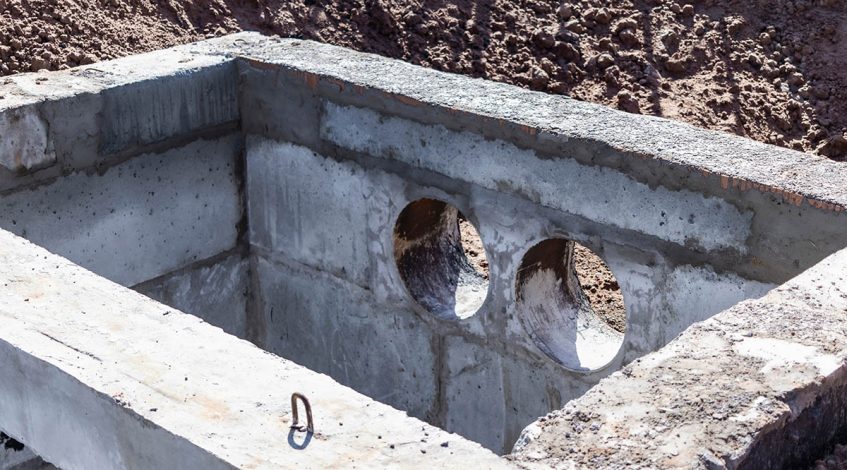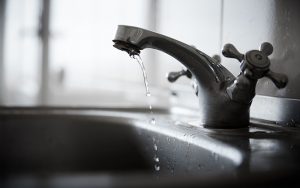Imagine a heavy downpour that quickly turns your garden into a soggy mess. The rainwater has nowhere to go, causing puddles and even risking damage to your property. This is where a stormwater pit installation comes to the rescue. It’s a stormwater drainage solution that not only manages excess water effectively but also protects your home from potential flooding.
A stormwater pit is a structure designed to collect and manage excess rainwater, preventing flooding and water damage. Proper installation is key for effective drainage. In this article, we’ll dive into the ins and outs of stormwater pits, guiding you through the installation process, benefits, and maintenance tips. Whether you’re a homeowner looking to safeguard your property or a contractor seeking detailed insights, this guide is tailored for you. Let’s explore how stormwater pits can transform your drainage system.
What is a Stormwater Pit?
A stormwater pit, also known as a catch basin, is an underground structure designed to collect and manage stormwater runoff. It’s a critical component of stormwater drainage systems, especially in areas prone to heavy rainfall. The pit collects rainwater from roofs, concrete driveways, pool pavers and other surfaces, directing it away from your property.
The design of stormwater pits varies, but they typically include a grate to filter out debris and a sump to hold the water temporarily before it’s released into the stormwater drainage system. This ensures that the water is managed effectively, reducing the risk of flooding and erosion.
Why is Stormwater Pit Installation Important?
Installing a stormwater pit is crucial for several reasons. Firstly, it prevents water from accumulating around your home, which can cause significant damage to the foundation and landscape. By efficiently managing rainwater, you can protect your property from potential water damage.
Moreover, stormwater pits play a vital role in environmental protection. They help in reducing erosion and maintaining the natural flow of water in the ecosystem. By directing water to designated drainage areas, these pits ensure that stormwater is managed sustainably.
Steps to Install a Stormwater Pit
Installing a stormwater pit involves several steps that need to be followed meticulously to ensure efficiency and durability. Here’s a detailed step-by-step guide to the process:
- Planning and Design: Begin by assessing the area to determine the best location for the stormwater pit. Consider factors like the natural slope of the land, existing water flow patterns, and soil type. It’s crucial to choose a spot that will allow the pit to collect the maximum amount of runoff while being easily accessible for maintenance. Additionally, check for underground utilities to avoid any damage during excavation.
- Excavation: Once the location is finalised, start digging a hole according to the dimensions of your stormwater pit. The depth and width should be sufficient to accommodate the pit and provide effective water collection. Typically, the hole should be deeper than the height of the pit to allow for a gravel base, which aids in drainage and stability. Ensure the sides of the hole are stable and the bottom is level to support the pit properly.
- Installation: Place a layer of gravel at the bottom of the excavated hole to improve drainage and provide a stable base for the stormwater pit. Lower the pit into the hole, making sure it sits level. Connect the inlet and outlet pipes to the pit, ensuring a secure fit. These pipes should be properly aligned to direct water into and out of the pit efficiently. Seal any connections with waterproof sealant to prevent leaks.
- Backfilling: After the pit and pipes are in place, backfill the area around the pit with soil or gravel. This step is crucial for stabilising the structure and preventing movement or collapse. Compact the backfill material in layers to ensure it is firmly packed. This helps maintain the integrity of the pit and ensures it can handle the pressure from surrounding soil and water flow.
- Inspection and Testing: Finally, inspect the entire installation for any visible issues such as misaligned pipes or cracks in the pit. Conduct a thorough test by running water through the system to check for proper drainage. Ensure that the water flows smoothly into the pit and exits through the outlet without any leaks or blockages. Address any issues promptly to ensure the system operates efficiently.
Maintenance Tips for Stormwater Pits
Regular maintenance of your stormwater pit is essential to keep it functioning efficiently. Here are some tips to help you maintain your stormwater pit:
- Regular Cleaning: Remove debris and leaves from the grate to prevent blockages. This ensures that water can flow freely into the pit.
- Inspection: Periodically inspect the pit for any signs of damage or wear. Look for cracks, leaks, or any other issues that may affect its performance.
- Professional Services: Consider hiring a professional for an annual inspection and maintenance. Experts can identify and address issues that may not be visible to the untrained eye.
Proper maintenance not only prolongs the lifespan of your stormwater pit but also ensures that it continues to manage stormwater effectively.
Regulatory Compliance for Stormwater Pit Installation
When installing stormwater pits, ensuring compliance with relevant building codes and environmental regulations is essential. In Australia, several national, state, and local standards govern stormwater management to prevent flooding, water pollution, and property damage.
Australian Standard AS/NZS 3500.3 specifies requirements for stormwater drainage systems. It includes detailed information on materials, pipe sizing, gradients, and connections to ensure safe and efficient water discharge. Every local council has specific regulations related to stormwater management. These can include rules about permissible drainage points, discharge rates, and environmental impact assessments. Before installation, property owners must check with their local council for any site-specific requirements.
Common Questions about Stormwater Pits
Here are answers to some of the most frequently asked questions about stormwater pits:
1. How often should I clean my stormwater pit?
It’s recommended to clean the pit at least twice a year, especially before the rainy season. Regular cleaning prevents blockages and ensures efficient water flow.
2. Can I install a stormwater pit myself?
While it’s possible to install a stormwater pit yourself, it’s advisable to hire a professional. Proper installation is crucial for the system to function correctly, and experts have the experience and tools needed for the job.
3. What size stormwater pit do I need?
The size of the stormwater pit depends on the area that needs drainage and the average rainfall in your location. Consulting with a professional can help determine the appropriate size for your specific needs. In some cases the need for a stormwater pit is negated after blocked drain plumbers inspected and cleared the pipes of debris.
4. Do I need a stormwater pit or French drain?
A French drain is a great solution for backyard drainage. While it can retain some water in heavy rains, a stormwater pit will hold more volume. Having both a stormwater pit and French drain installation can increase the effectiveness of your drainage system.
Conclusion
Installing a stormwater pit is a smart investment for any property. It not only protects your home from water damage but also contributes to sustainable water management. With proper installation and maintenance, a stormwater pit can provide long-lasting benefits. If you’re dealing with frequent water accumulation or planning a new construction, consider installing a stormwater pit. It’s a step towards a safer and more environmentally-friendly property.
For professional assistance with stormwater pit installation or maintenance, get a quote from the best plumbers near you. Nation-wide, our network of drainage specialists will ensure your property is well-protected and efficient with expert stormwater management.







